Monkey Mia Reserve
General information
Monkey Mia Reserve is situated 860km north of Perth and is part of the Shark Bay World Heritage Area – the first location in Western Australia to receive UNESCO status in 1991.
Shark Bay – “Gutharragura” for the Aboriginal people means “Two Waters” because of the two protected bays. This gorgeous area is home of the Malgana Aboriginal people. To read more about this area please go to the article “Western Australia – a natural beauty”.
How to get there
To reach Monkey Mia you can either take a bus (Greyhound Buses) or a plane (Skywest Airlines). Please be aware that the only mobile service provider is Telstra.
Where does the name Monkey Mia come from?
Let´s talk about the name “Monkey Mia” (Aboriginal word for home/camp/resting place):
- some believe it refers to a pearling boat named Monkey anchored in the bay in the late 19th century
- others that it refers to the Malay pearlers who camped at this location and kept monkeys as pets
- others think that it has something to do with the pastoralism industry as ” Monkey” being an Australian colloquialism for sheep
I have my favorite one – now it´s your turn to pick yours.
The volunteer program
Monkey Mia is renowned for the bottlenose interaction. Three generations of bottlenose dolphins (I was told the smallest bottlenose on earth) have been visiting the beach every day for 40 years. When I was in school I always wanted to work with dolphins therefore when I read about the possibility to volunteer and get close to these animals I applied immediately.
The volunteer program runs 365 days a year from 7:30am – 12pm – as a volunteer (of the Department of Environment and Conservation – DEC) you assist with the three feeds of the dolphins which are done each day between the hours of 8am and 12pm. Please be aware that to become a volunteer English language both spoken and written is essential. If you are younger than 18 years (between 16-18) you need a written approval from a guardian.
This volunteer program is very popular therefore the sooner you apply the more chances you have to find your spot.
Besides assisting with the feeds, the volunteer work might include the preparation of the fish for the dolphin, the cleaning/sanitizing of the fish room, site maintenance (sweeping floors, beach rubbish removal, window cleaning, gardening etc.), Walk Track Maintenance and visitor Surveys.
Another job that volunteers do is writing down the names of the dolphins which came to the interaction, the temperature of the water, the time on which each dolphin arrived, the tide and the number of people who came to the interaction.
As a volunteer you are entitled to have a discount at the DEC shop (only if you are wearing the uniform) and at the backpacker accommodation at Monkey Mia. Monkey Mia Dolphin Resort has different types of accommodations – if a dorm does not suit you – you can choose a beachfront villa, a garden villa, a shared ensuite, a spot at the camping Area/Tent site or if you have a caravan with you, you can book a spot at the powered caravan site. As you can see there are plenty of options. The resort has a lot to offer such as BBQ areas, kitchen, bar/café, tennis court, pool & hot tub, a restaurant, internet access and laundries.
How everything started & the new guidelines
I think that it is interested to understand how everything started or at least it was for me. It can be dated back to the 1960s when fishermen use to share their catch with some dolphins. One of them was called Holeyfin who died after being pierced in the heart by a stingray barb in 1995. Over the years the numbers of dolphins that were fed at the jetty and later the beach increased. Researchers started studying the dolphins since 1984 – they discovered that the mortality rate among the calves of visiting dolphins was higher than of the other dolphins. Between 1987 and 1994 92% of calves born from these dolphins died due to the combination of overfeeding and spending too much time at the beach without caring for their calves.
Therefore, guidelines were introduced in order to raise these calves giving them the same chance of survival of the other wild dolphins. Of the 13 dolphins that come regularly they decided to feed only mature females (no males are fed) and to never give them more than 1/5 of their daily food (just local fish is given) requirements – this means that they must keep hunting. The feeding takes place only in the morning and there are no set feeding times to encourage dolphins to behave normally. Since these regulations we were told that 92% of calves survive. Please be aware that it is illegal to feed dolphins besides these authorized feds.
The interaction with the dolphins
Now let´s get to the part of the interaction with the dolphins which is done in the so called “Dolphin Interaction Area “. Obviously to protect the dolphins there are many things that are prohibited in this area such as boating, swimming, fishing, spearfishing, netting, water skiing and jet skiing . Please be aware that the dolphins are wild animals – therefore the interaction depends entirely on them.
The interaction takes place in the morning between 7:30am to 12pm. The feeding time starts 25minutes after the arrival of the first dolphin (these were the dolphins name when I was volunteering: Surprise, Puck, Piccolo, Shock) or 10minutes after the arrival of a mother dolphin with her calf (while I was volunteering there was Nicky who had a calf which was born on August the 27th – it was really important to start not later than 10minutes after her arrival because calves have to be fed every 15minutes – the water where the feeding takes place is too shallow therefore the calf is not able to eat for the entire duration of the interaction).
After an introduction about the dolphins and explanation on how to behave the rangers/volunteer do get in the water and get close to the dolphin they have been assigned to.

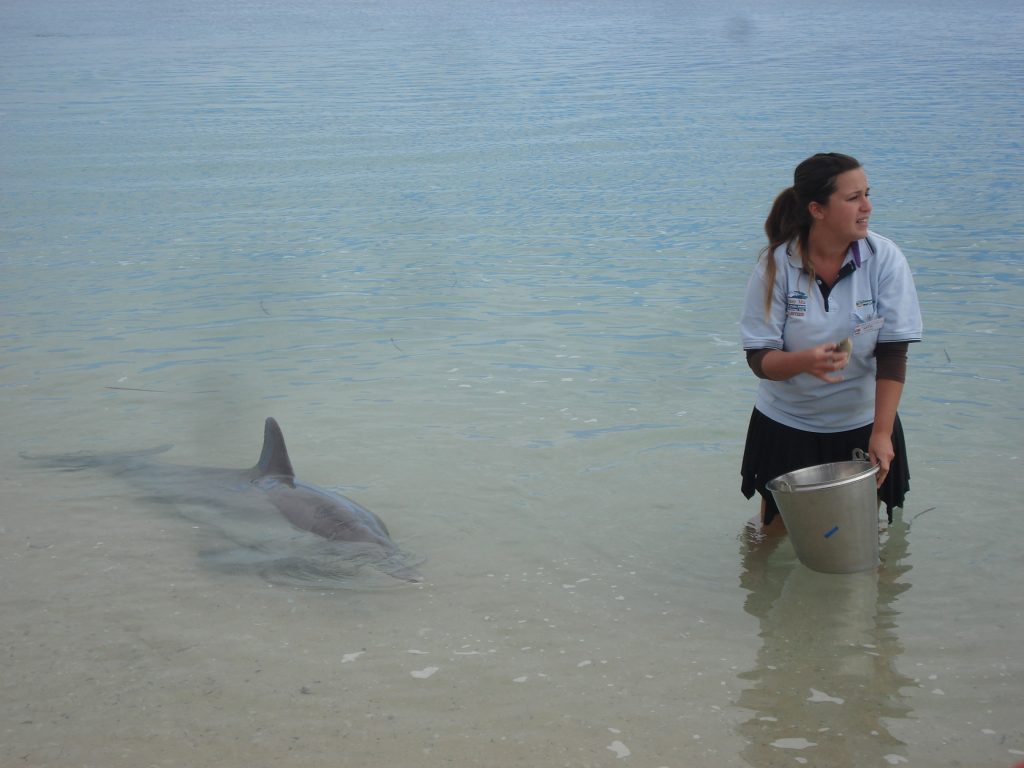
At this point every volunteer chooses one of the crowd to feed the dolphin. Please be aware that just the volunteers and the one chosen for the feeding can get into the water – everyone else must stay out of the water. This is because if the people are in the water they can create sounds which distract the dolphin’s mothers from the calf and because it gives dolphins conflicting signals.
Please be aware that the dolphins are fed under strict guidelines to ensure that dolphins continue to hunt and behave naturally:
- there is a maximum amount of fish the dolphins get every feed – this means that there is no guarantee that you will be chosen for the feeds
- dolphins are very sensitive to bacteria and germs therefore no broken fish, defrosted for more than 24 hours, washed with hot water (which can partially cook the fish) or fallen fish can be given to dolphins
- dolphins should not stay longer than 30minutes in the bay.
When you get to the last fish all volunteers must raise their hands and wait for everyone else – the last fish will be given at the same time (this is done because every dolphin gets a different kind of fish and different amount of fish depending on their age and it is important to finish all together in order to avoid having dolphins swimming around to get the fish which is meant to be for another dolphin).
Below some info on how to feed the dolphin:
- To feed the dolphin you need to grab the fish from the tail – dolphins eat the head first. Please remember that if the fish falls in the water you need to leave it for the dolphin to take it by itself.
- The fish must be put into the water while feeding because it is not good for dolphins to lift their heads since they do not have enough muscles to support.
The rinsing of the bucket in front of the dolphins is the signal for the dolphins that the feeding is over.
I remember that my favorite one was Puck that by the time I was there was 31 years old – the reason why is very simple. On my very first feeding Puck arrived late and to get my attention she rubbed on me – well this was my first interaction with dolphins…one that I never forget. Maybe now you are asking yourself how I can be sure that it was Puck and not another female well dolphins are recognized by the rangers thanks to their dorsal fins which change throughout the years becoming a distinctive feature of everyone.
During the dolphin feeding – Pelicans are fed as well. This is done to avoid that pelicans start coming after the fish (fish that while the preparation falls on the ground or fish without tale is given to pelicans). The Australian pelican is widespread on the inland and coastal waters of Australia, New Guinea, Fiji, and parts of Indonesia. I was told that it has the longest bill of any living birds.
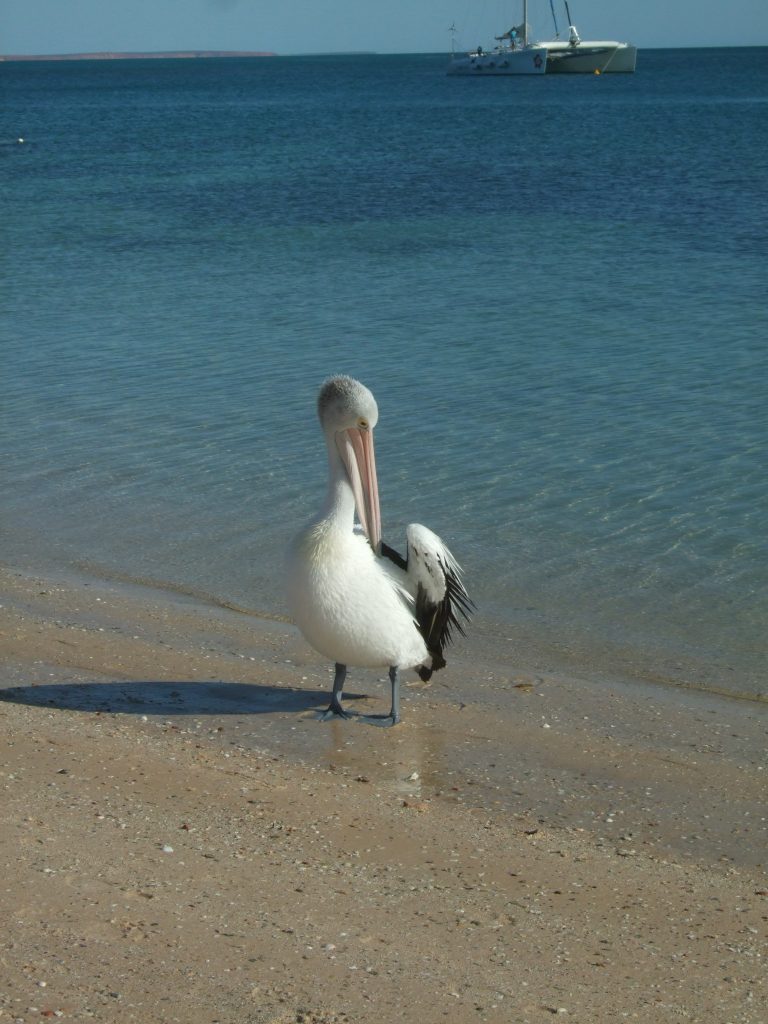
The Indo Pacific Bottlenose
Now I would like to give you some facts about the Indo Pacific Bottlenose who live in Monkey Mia.
- with a length of 2,3m these bottlenose dolphins are the smallest one.
- they are warm blooded
- between the age of 7-12 years they develop freckles on their belly and have pointed beaks and conical teeth (total number of teeth is 104).
- they live in a Fission-Fusion society in which individuals mix in small groups can change throughout the day – they also sleep and rest in groups.
- Male live between 30-35 years while female can live up to 40 years
- dolphins breath 4-5 times per minutes but they can hold their breath for several minutes. To breath they open their blowhole.
- they can sleep/rest motionless at the surface or close to surface – half the brain remains conscious with 1 eye open to watch what is around and because they need to come up periodically to breath.
- the dorsal fins do change while growing (uniquely shaped and scarred) becoming a distinctive feature of each individual
- each bottlenose dolphin has an individual and distinctive vocalization called “signature whistle” which allows to recognize each other and is used for localization purposes
- they can cruise at about 5km/h up to 40km/hour
- their hearing is highly developed – I was told that their hearing exceeds that from dogs. They can hear wide range of frequencies and determine direction and distance of source and sound
- the mating of bottlenose dolphins is something that I learned in Shark Bay and thanks to their research. There have been many discussions about this due to the sexual coercion being part of their reproduction strategy. First of all, let´s start with saying that they reach sexual maturity at around 11years and that they can have one calf every three to four years. I was told that two or three males will form a sort of gang, they swim and hunt with each other – called “first-order”. This group will single out a female to mate with her – the female repeatedly tries to escape while the males restrict her attempts by charging in, bashing her with their tails, head-butting, biting, and body-slamming her into submission. The males are often closely related in these alliances. The mating takes about ten seconds, but it can be repeated several times.
- females raise the calf all by themselves and the calf stays with their mum till the age of 3 -4
- calves get fed in baby position – they stick their tongue out and the mum will give them one drop of milk at the time.
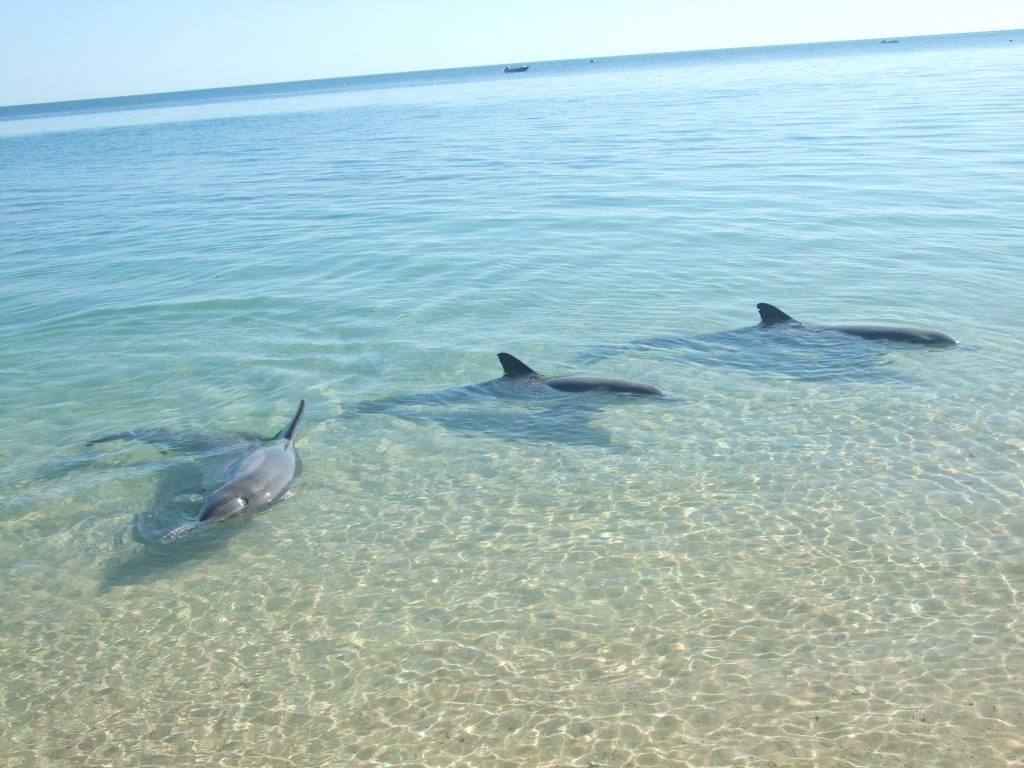
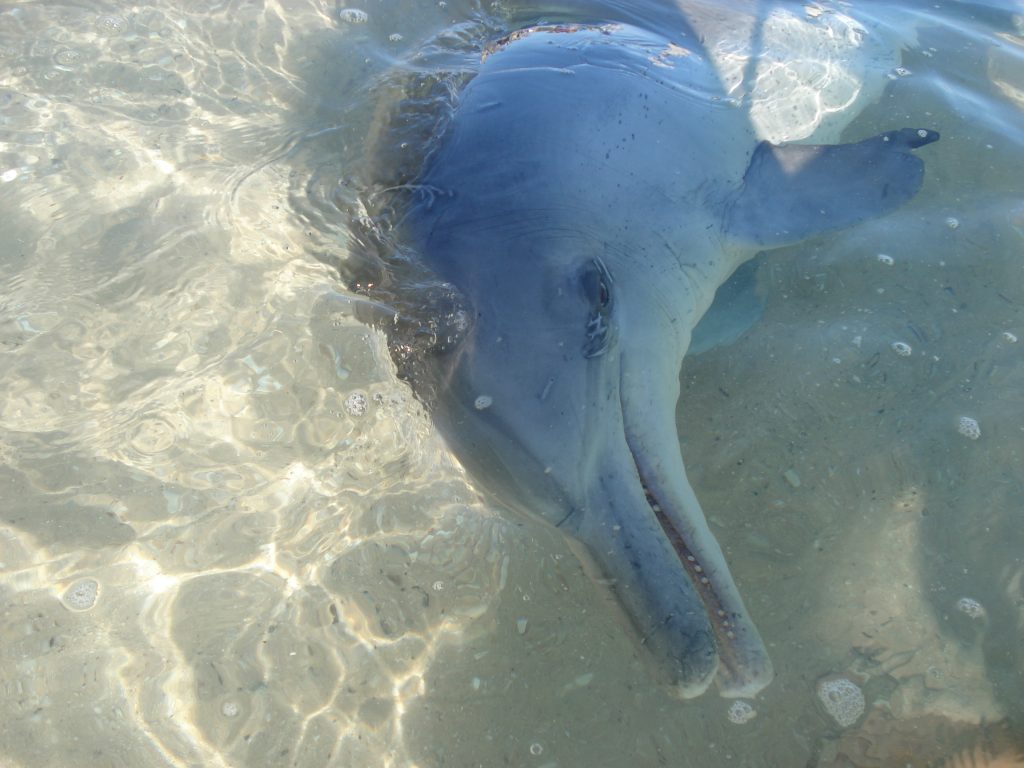
Dugongs
Shark Bay is also known for having a large population of dugongs (10% of the world´s total population) – as a volunteer I was entitled to a free wildlife cruise (after 4 days of volunteer work and subject to availability) and I was lucky enough to see these spectacular animals and much more. Below some info
- dugongs also known as sea cows have an elongated snout facing downwards with an enormous, bristly mobile upper lip
- they can reach 3m, weigh up to 450kg and have a lifespan of 70years. they have an up to 30m long intestine because its seagrass diet is hard to digest
- dugongs can have a calf every 3-7 years which stays with their mum two or more years.
I do suggest you take this boat tour because the guides do really have a lot of knowledge about the marine wildlife and you will definitely learn some interesting things and depending on the time of the year you may also see turtles, sharks, sea-snake, stingrays, and flying-fish.
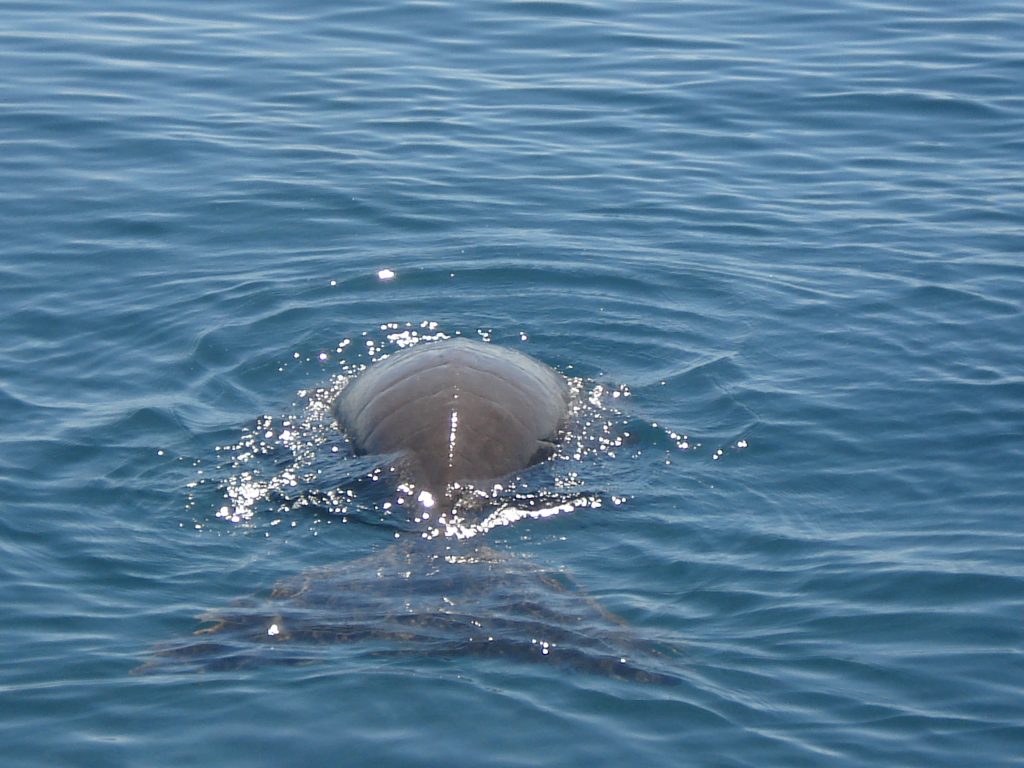
What else to do in Monkey Mia
Another lovely thing I did was the sunset cruise – highly recommended. All boat tours from Monkey Mia are subject to strict environmental regulations to ensure minimal impacts on marine animals.
I spent my afternoons in Monkey Mia relaxing, sunbathing and swimming. If you are lucky enough, you will see dolphins while swimming (I was)- please be aware that it is illegal to approach them within 30 meters . If you are fortunate to have a dolphin approach you please do not forget that we are not talking about pets – remain still and enjoy the experience without touching it.

There are a lot of things to do in this area – if you have a car I do suggest you spend the time visiting also the area around – as said before to have some info’s regarding the area please read the article “Western Australia – a natural beauty”.
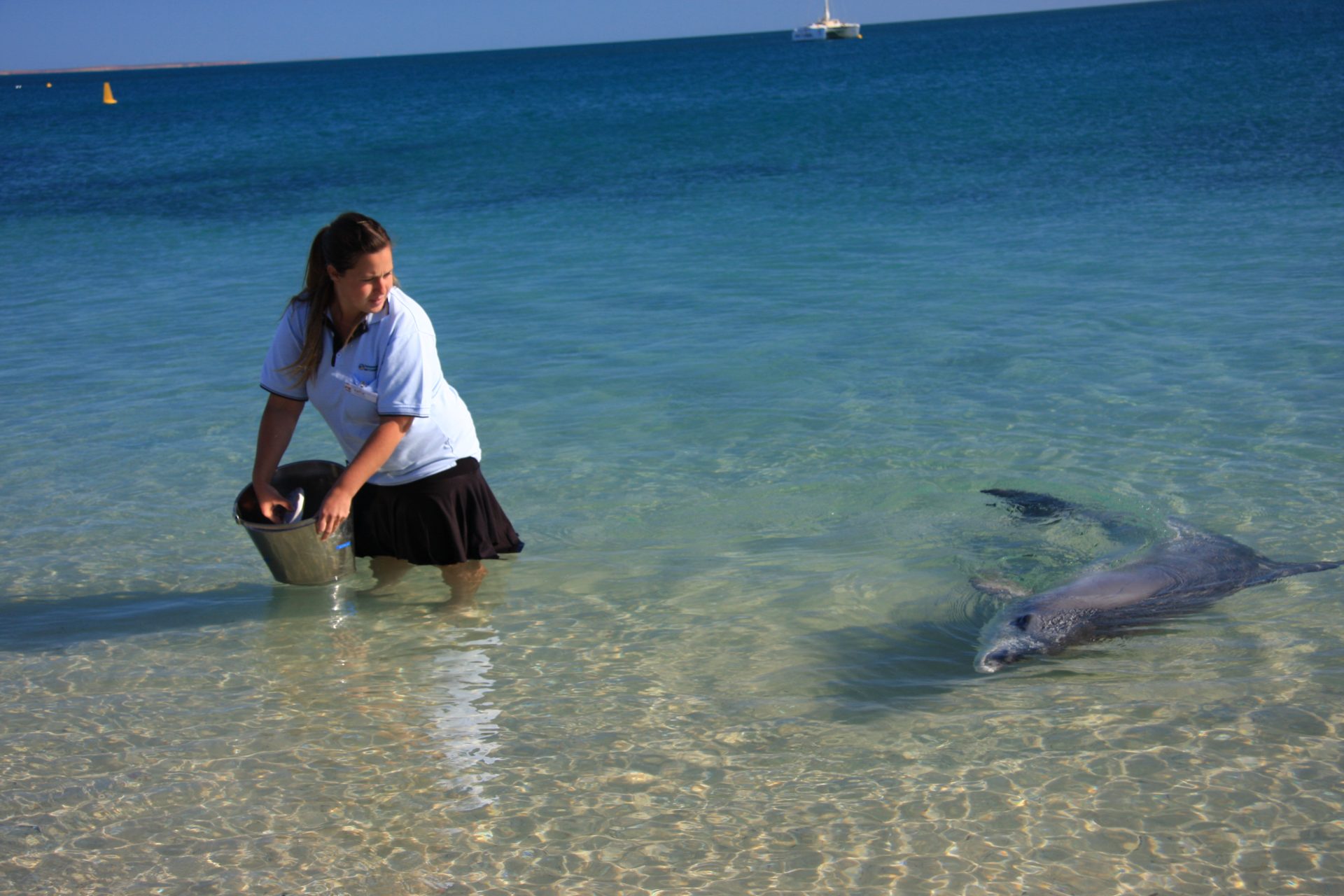

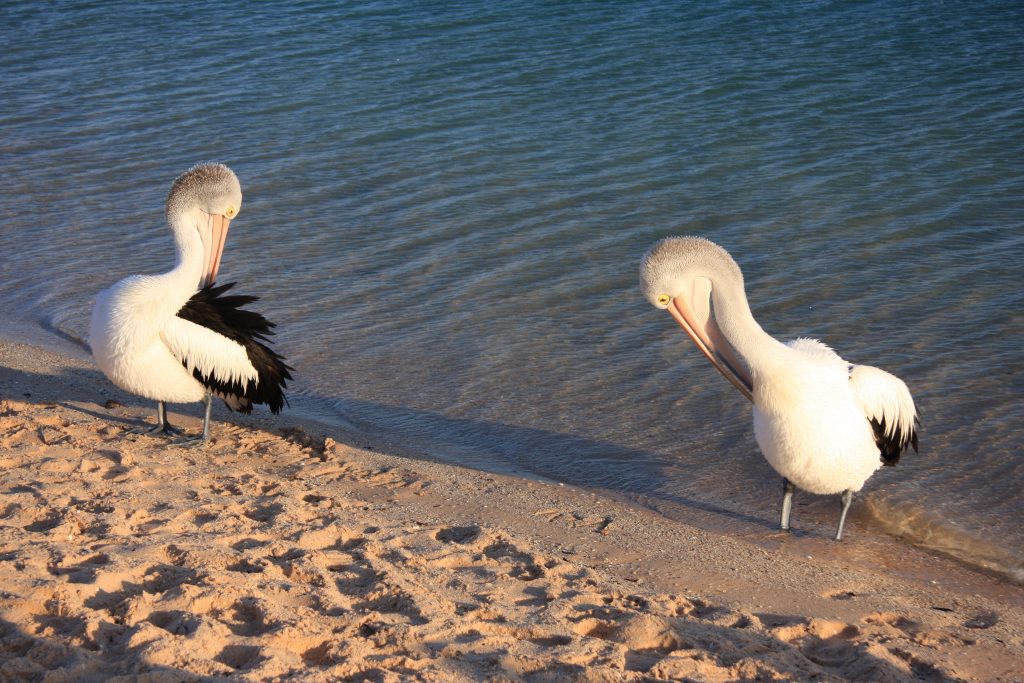
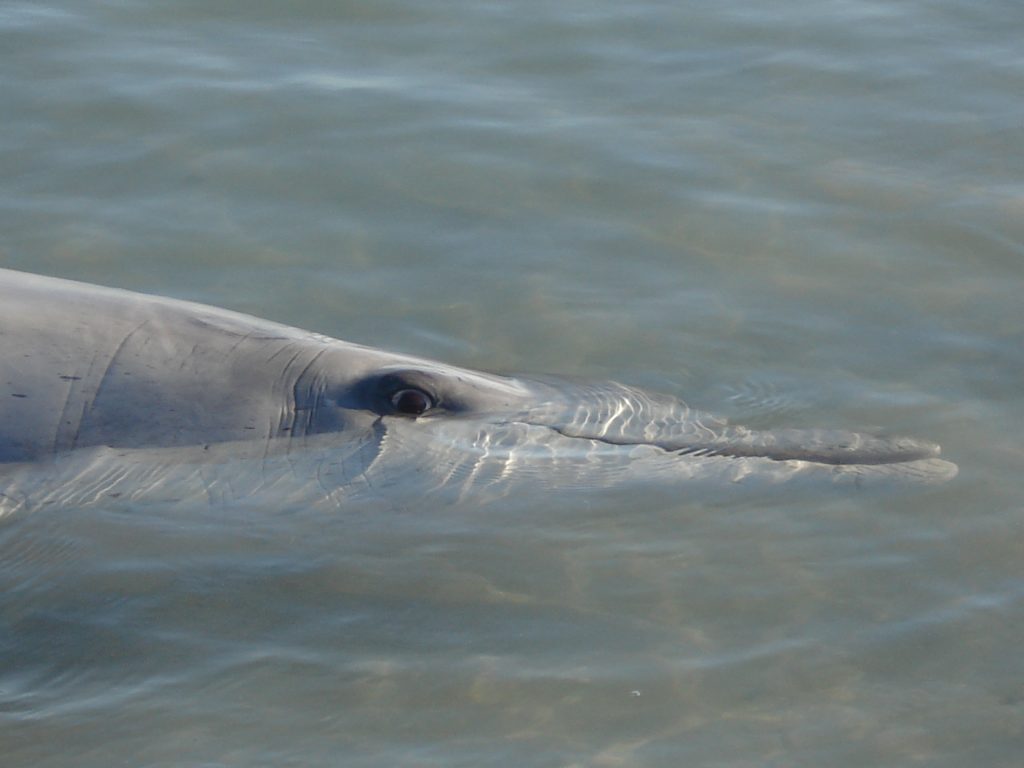
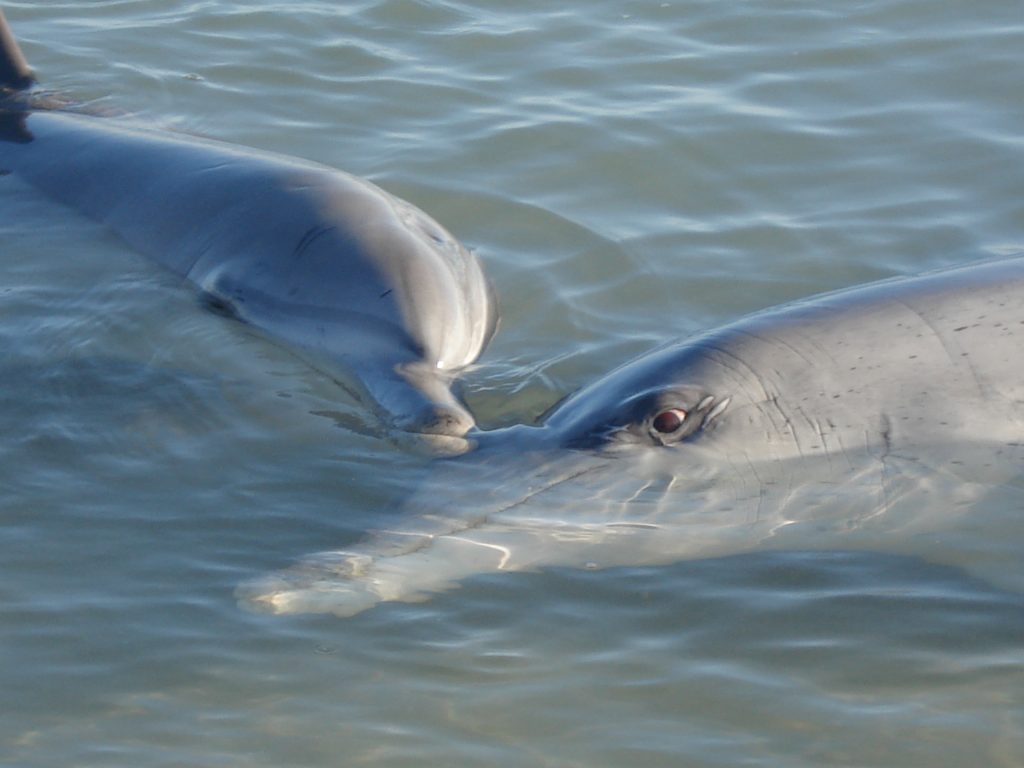


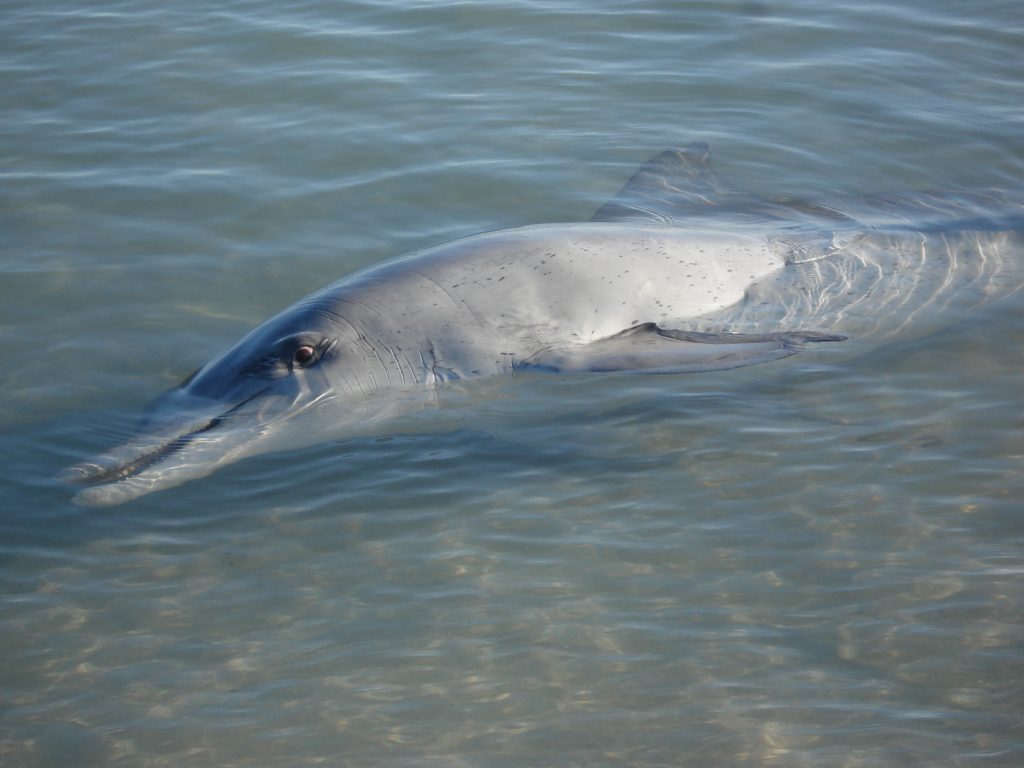
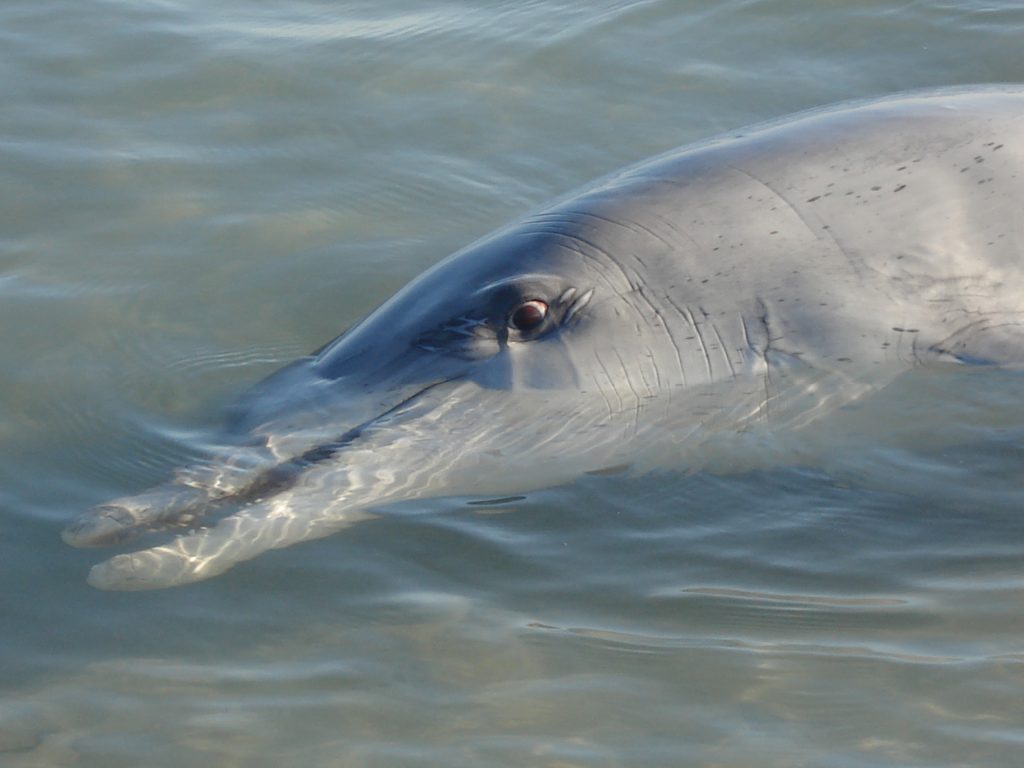
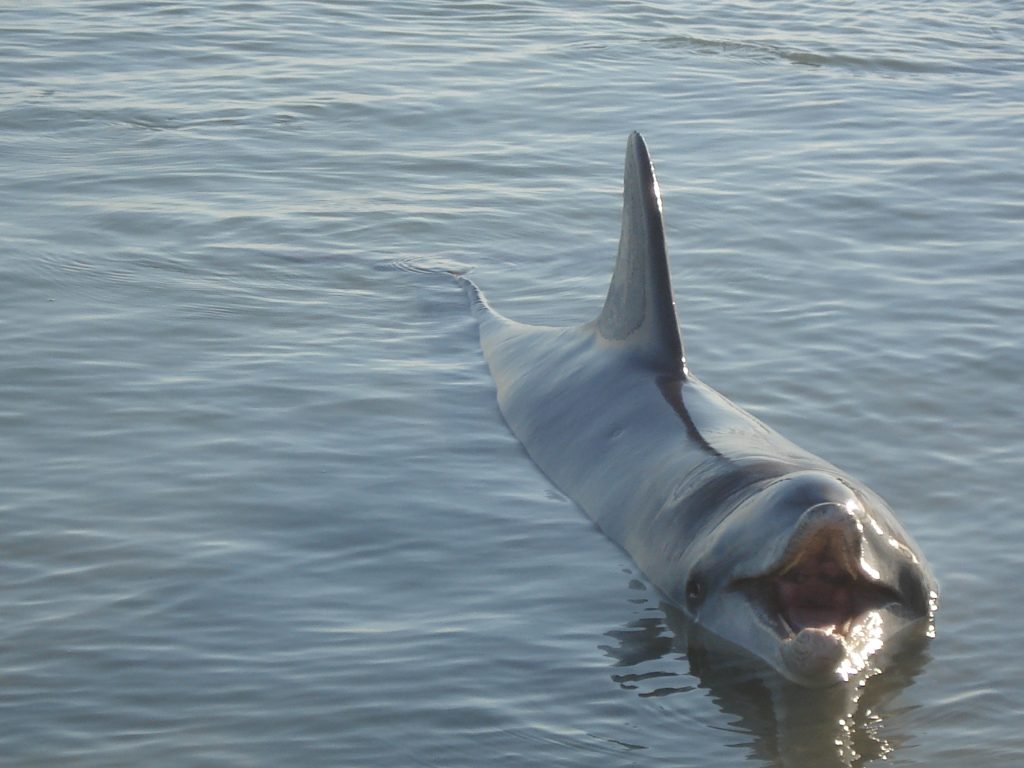
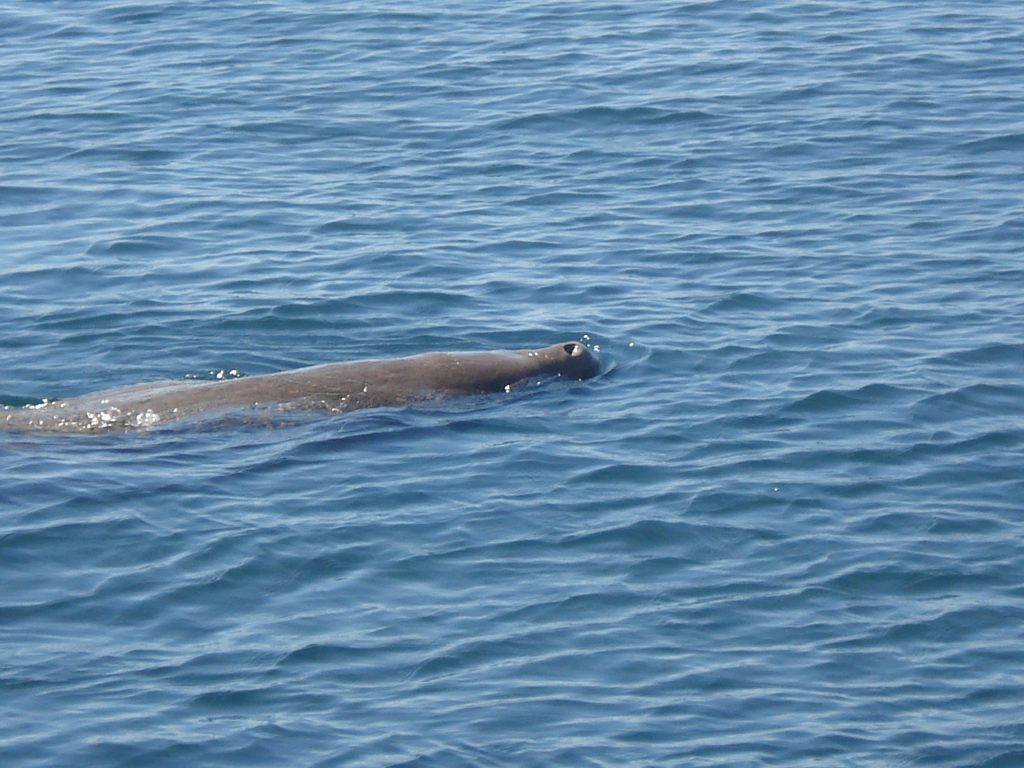
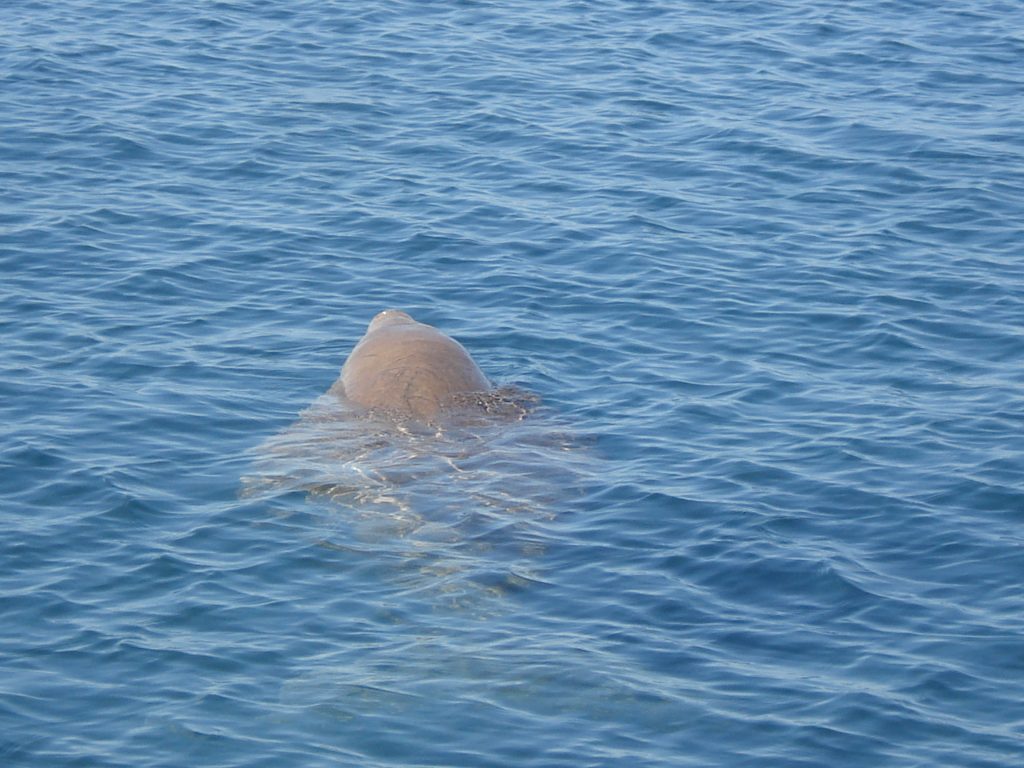

Leave a reply